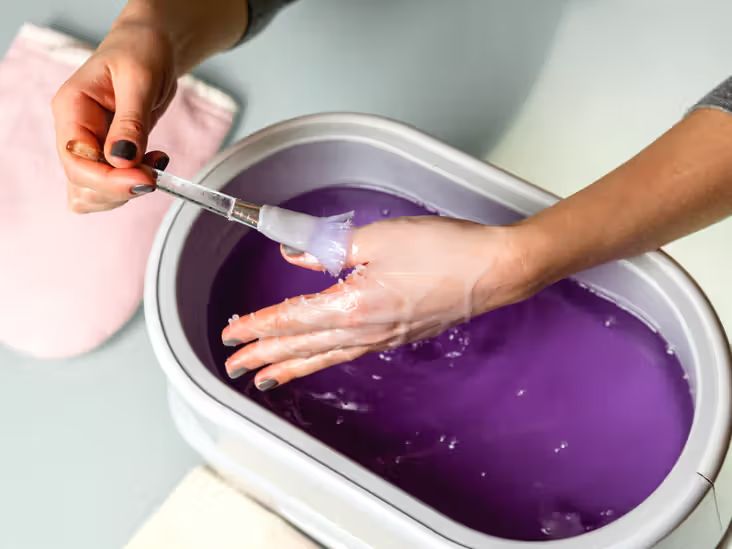Can You Store Candles In A Hot Garage?
Candles are beloved for their soft lighting and pleasant scents. However, as with many household items, proper storage is important for preserving their quality and integrity. Storing candles in hot environments, like garages, can pose some risks and challenges. Before putting your candle collection in the garage, it’s important to understand how heat can affect candles and steps you can take to protect them.
Ideal Candle Storage Conditions
Candles last longest when stored properly in ideal conditions. The three key factors for maximizing candle shelf life are temperature, humidity, and light exposure.
Ideal storage temperatures for candles range from 50-80°F. Temperatures below 50°F can cause candles to become brittle and crack over time as the wax contracts. Prolonged exposure to high temperatures above 80°F can cause candles to lose their shape, slump, or melt. The most favorable temperature range is 60-70°F to maintain candle integrity.
Candles require relatively low humidity between 30-50% for optimal storage. High humidity above 65% can cause labels to peel and bubbles or whitening to appear on the candle surface as moisture is absorbed. Low humidity under 20% can dry candles out.
Candles are best kept in dark storage away from light sources like sunlight and fluorescent lighting which can accelerate fading of colors and fragrances. Light exposure causes candles to degrade faster.
By storing candles around 60-70°F, with 30-50% humidity, and in darkness, you can maximize the shelf life and maintain quality.
Dangers of Hot Temperatures
Excessive heat is one of the biggest threats to candle integrity and shelf life. When candles are exposed to hot temperatures above 75°F for extended periods of time, the wax can start to melt and destabilize. This makes the candle more prone to issues like wax pooling, sinkholes, and cracking.
Additionally, heat speeds up the evaporation of candle fragrance oils. Storing candles in hot environments can cause the scent throw to weaken over time. You may notice your candle no longer has that delightful aroma it did when you first purchased it.
Heat can also oxidize and discolor candle wax. This is especially true for lighter colored waxes like white, ivory, or pale yellow. Prolonged heat exposure can cause these candles to yellow, darken, or develop an unattractive rainbow effect. This damages the candle’s appearance.
In summary, excessive heat can cause candles to melt, lose scent, become discolored, and lose their visual appeal and performance. Proper storage in a climate-controlled environment is key for maintaining candle integrity.
Typical Garage Conditions
Garages often experience temperature and humidity fluctuations that can be harmful to candle storage. Here are some typical conditions found in garages:
-
Temperatures – Garages are not climate controlled and can experience extreme temperature swings from very hot in the summer to freezing cold in the winter. Temperatures often exceed 90°F/32°C in the summertime.
-
Humidity – Humidity levels also fluctuate dramatically between the dryness of winter and the humidity of summer. Moisture levels can spike in the summer, especially if the garage is located in a humid climate.
-
Light – Garages tend to be darkened spaces without much natural light. However, artificial lights are often kept on for extended periods, which can accelerate candle wax melting and fading of scents/colors.
These fluctuating hot temperatures, humidity spikes, and constant light exposure create an unstable environment not ideal for candle storage and preservation.
Storing Candles in Hot Garages
Storing candles in hot garages can pose several risks that may lead to damaged or ruined candles. Garages, especially in summer months, often reach very high temperatures that significantly exceed the ideal storage temperature for candles. Exposing candles to prolonged heat can cause a variety of issues:
- Melting and Deformation – If temperatures get hot enough, candle wax can start to soften, melt, and lose its shape. This can cause candles to become misshapen or lose their form entirely.
- Scent Loss – Heat speeds up the evaporation of essential oils and fragrance ingredients in candles. Storing candles in hot conditions can cause them to lose their scent more quickly.
- Discoloration – Some candle dyes and pigments are heat sensitive. Prolonged heat exposure can cause candle wax to discolor or develop an unattractive appearance.
- Wick Issues – The wick in a candle can become loose,fall out, or lose its shape when subjected to high heat. This can lead to poor or uneven burning.
- Shorter Burn Time – Candles stored in heat may burn more quickly, reducing burn time, due to the warming and softening of the wax.
- Increased Risk of Fire – Excessive heat can make candles more prone to catching fire, flaring up, or releasing more smoke when burned.
To avoid candle damage, it’s best to store them in a cool, dry place away from heat sources. The garage is typically not an ideal storage place for candles in hot climates or seasons.
Protecting Candles from Heat
If keeping your candle collection in the garage is unavoidable, there are some steps you can take to protect them from the heat:
-
Insulate the storage containers – Wrap cardboard or foam around plastic bins, or use an insulated cooler if you have one available.
-
Choose storage tubs instead of boxes – Plastic storage containers seal better than cardboard and provide more insulation.
-
Place containers off the floor – Store candles on shelves or pallets to allow air circulation underneath.
-
Use reflective materials – Line storage bins with foil or reflective bubble insulation to reflect heat away.
-
Add ice packs – Throw some ice packs in with the candles to help lower the temperature inside the containers.
-
Store in the coolest area – Place bins against an exterior garage wall or in the most shaded spot you can find.
-
Wait for cooler nights – Move candles into the garage briefly at night when temperatures decrease.
Getting creative with insulation and air flow is key to protecting your candle stash from melting or losing fragrance in a hot garage environment.
Alternative Storage Options
While hot garages are rarely ideal for storing candles, there are plenty of better options to help extend your candle’s shelf life and preserve its quality.
Some of the best places to store candles include:
-
Cool, dry basements or cellars – These spaces often maintain cooler, more stable temperatures year-round.
-
Bedrooms and living areas – Storing candles in the main living spaces of your home can work well, as long as they are kept away from direct light sources.
-
Kitchen cabinets and pantries – The cupboards in these spaces tend to be dark and cooler than other areas.
-
Closets – Placing candle jars or tins on closet shelves can help buffer temperature swings.
-
Covered porches and garages – If your garage or porch remains relatively cool, storing candles in sealed containers can work in these spaces.
The optimal storage temperature for candles is between 50-80°F.Aim for areas in your home that fall within or close to this temperature range.
Additionally, make sure candles are stored away from direct light, heat vents, appliances, and anything else that generates heat. Keeping them in sealed containers will also help protect the wax and preserve the fragrance.
Signs of Heat Damage
Extreme heat can cause noticeable damage to candles. Here are some of the common signs that a candle has been exposed to excessive temperatures:
Melting: One of the most obvious signs is melting or distortion of the candle wax. Even pillar candles encased in glass can become misshapen, with wax expanding beyond its original form. Melted wax may pool at the bottom of the container or even leak through cracks onto furniture or floors.
Scent Loss: Heat can cause a candle’s fragrance oils to evaporate and escape more quickly. You may notice the smell is no longer as strong or lingers for a shorter time when burning the candle. Excessive heat diminishes the scented experience.
Discoloration: Some candle dyes and pigments are sensitive to high temperatures. You may notice the original color becoming lighter, darker or changing hue altogether after heat exposure. Whites and pastels are especially prone to discoloration.
Wick Damage: The wick may become brittle, shrink, expand, bend or show other signs of damage from prolonged heat. This can affect how well the candle burns and performs.
Sweating: Heat can cause the wax to weep or sweat, leading to oily drops forming on the surface. This is caused by components in the wax liquefying at high temperatures.
Carefully inspect candles stored in hot environments to look for any of these common signs of heat damage. If detected early, you may be able to salvage the candle by moving it to a cooler location.
Extending Candle Shelf Life
Proper storage is crucial for extending the shelf life of candles. Here are some tips to help your candles last as long as possible:
Store candles in a cool, dry place away from heat sources like vents, ovens and direct sunlight. Temperatures between 60-75 degrees F are ideal. High heat can cause candles to melt and lose their shape faster.
Keep candles in an airtight container to protect them from dust and humidity. Glass jars, metal tins or sealed plastic bins are good options.
Don’t keep candles near open flames like stoves or candles. The fragrance oils in candles can evaporate faster around heat sources.
Store vertically if possible. Laying candles on their side can cause wax to spread out and lose its form over time.
Keep wicks trimmed to 1⁄4 inch before storage. Long wicks can curl and get buried in wax while in storage.
Rotate stock and use older candles first before newer ones. The fresher the candle, the longer the burn time.
Avoid temperature fluctuations. Don’t store candles in attics or garages if temperatures swing hot/cold.
With proper storage conditions, most quality candles can last 1-2 years or more before burning.
Conclusion
When it comes to proper candle storage, a hot garage is far from ideal. High temperatures can warp candles and cause them to lose their shape, as well as damage their scents and lead to premature decay. A cool, dry area away from direct light is the best option for maximizing candle shelf life.
To recap, exposing candles to excessive heat can accelerate their melting point, fade or alter their fragrances, and encourage sinkholes or cracks. Typical garages, which experience large temperature fluctuations and high humidity, subject candles to these risks. While steps can be taken to protect candles, like wrapping them or regulating the temperature, the garage still won’t equal the controlled conditions of indoor storage.
For the optimal storage location, a closet, basement, or cabinet inside the home is recommended. With more stable temperatures and lower humidity, these spaces will preserve your candle’s scent throw, appearance, and burn time. Proper storage will allow you to enjoy your favorite candles for longer.



